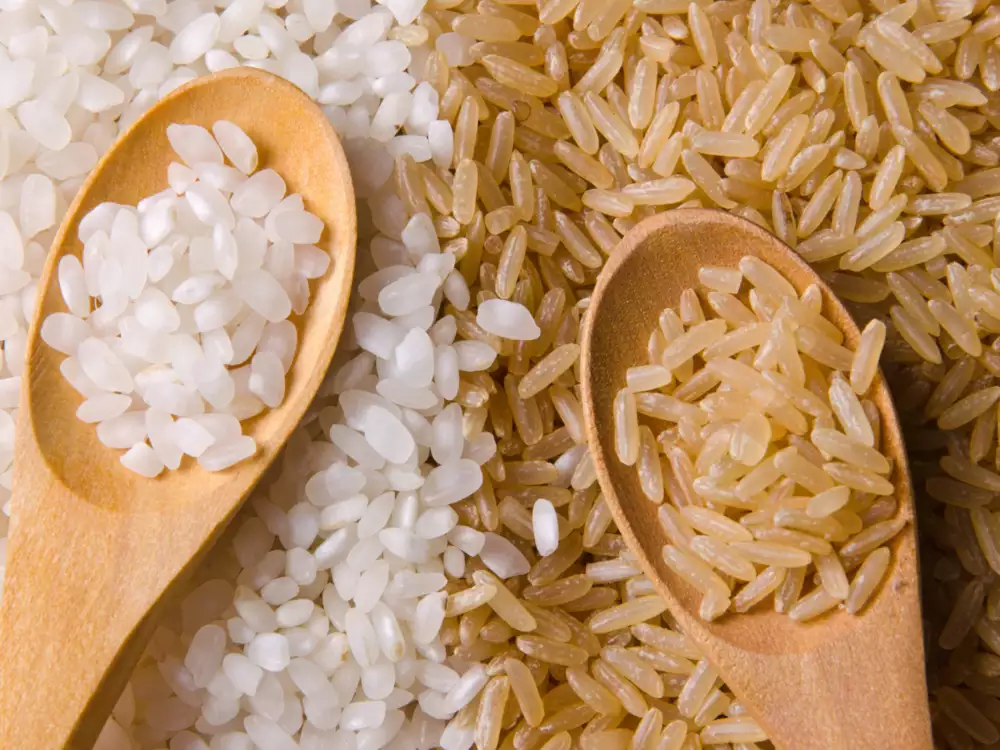While both white and brown rice originate from the same grain, their nutritional profiles differ significantly. White rice undergoes processing that strips away its outer layer, the bran, and the germ, leaving behind the endosperm. This refining process removes essential nutrients, including fiber, vitamins, and minerals, which are retained in brown rice. Here are several reasons why white rice is considered less healthy compared to brown rice:
-
Nutrient Content: Brown rice retains its bran and germ layers, which are rich in nutrients such as fiber, B vitamins, iron, magnesium, and other essential minerals. In contrast, white rice lacks these nutrients due to the removal of the bran and germ during processing.
-
Fiber Content: Brown rice is a good source of dietary fiber, which plays a crucial role in digestive health, weight management, and reducing the risk of chronic diseases such as heart disease and type 2 diabetes. Fiber helps regulate bowel movements, promotes satiety, and stabilizes blood sugar levels. White rice, on the other hand, contains very little fiber, as most of it is removed during the refining process.
-
Glycemic Index: The glycemic index (GI) measures how quickly a food raises blood sugar levels. Brown rice has a lower glycemic index compared to white rice. Foods with a lower GI are digested more slowly, leading to a gradual increase in blood sugar levels and providing sustained energy levels. In contrast, white rice has a higher GI, causing a rapid spike in blood sugar levels, which may contribute to insulin resistance, weight gain, and an increased risk of type 2 diabetes.
-
Weight Management: The higher fiber content in brown rice helps promote feelings of fullness and satiety, which can aid in weight management by reducing overall calorie intake. Additionally, the slower digestion of brown rice helps prevent sudden spikes and crashes in blood sugar levels, which can contribute to cravings and overeating. White rice, with its lower fiber content and higher glycemic index, may be less effective in supporting weight management efforts.
-
Cardiovascular Health: Studies have shown that diets rich in whole grains, such as brown rice, are associated with a lower risk of heart disease and stroke. The fiber, vitamins, and minerals found in brown rice help lower cholesterol levels, reduce blood pressure, and improve overall heart health. In contrast, diets high in refined grains, like white rice, may increase the risk of heart disease due to their association with obesity, insulin resistance, and inflammation.
-
Nutrient Absorption: The bran and germ layers of brown rice contain phytochemicals and antioxidants that have been shown to have protective effects against chronic diseases such as cancer and cardiovascular disease. These beneficial compounds may enhance nutrient absorption and promote overall health. However, these components are largely absent in white rice due to the refining process.
-
Digestive Health: Fiber plays a crucial role in maintaining digestive health by promoting regular bowel movements and preventing constipation. Diets high in fiber, such as those that include brown rice, can help prevent digestive disorders like diverticulosis and irritable bowel syndrome. Conversely, a diet low in fiber, like one that relies heavily on white rice, may increase the risk of constipation and other gastrointestinal issues.
In conclusion, while white rice may be a convenient and versatile staple in many diets, its nutritional value is inferior to that of brown rice. Brown rice provides essential nutrients, dietary fiber, and beneficial phytochemicals that support overall health and well-being. Incorporating brown rice into your diet can help promote digestive health, weight management, and reduce the risk of chronic diseases such as heart disease and diabetes. Therefore, opting for brown rice as a healthier alternative to white rice is a simple yet effective way to improve the nutritional quality of your meals and support long-term health.
